The amount of plastic we produce and use every year is far from imagination. It is not exaggerated if we say that we are addicted to plastic products and packaging. This section shows the barriers and enablers of plastic recycling, focusing on the plastic sale and consumption in the plastic lifecycle.
Learn More!It is not easy to act if you do not know enough! The lack of knowledge causes the low priority of recycling in daily personal life. People usually do not know which plastic products can be recycled and how many years they may last in our environment.
Consumers show less tendency to recycled plastic, as the virgin plastic products costs same, but with higher quality. This prompts difficulty in gaining market share.
Visual and graphical elements, with the inherent immediacy in message communication, help further clarify the consequence of plastic usage. Using visual communication methods, people can learn more about visual cues on packaging, remarkable colors, signs, etc. This awareness decreases the amount of plastic consumption and prompts upcycling, which is reusing household plastic waste.
Return it, get refunded.
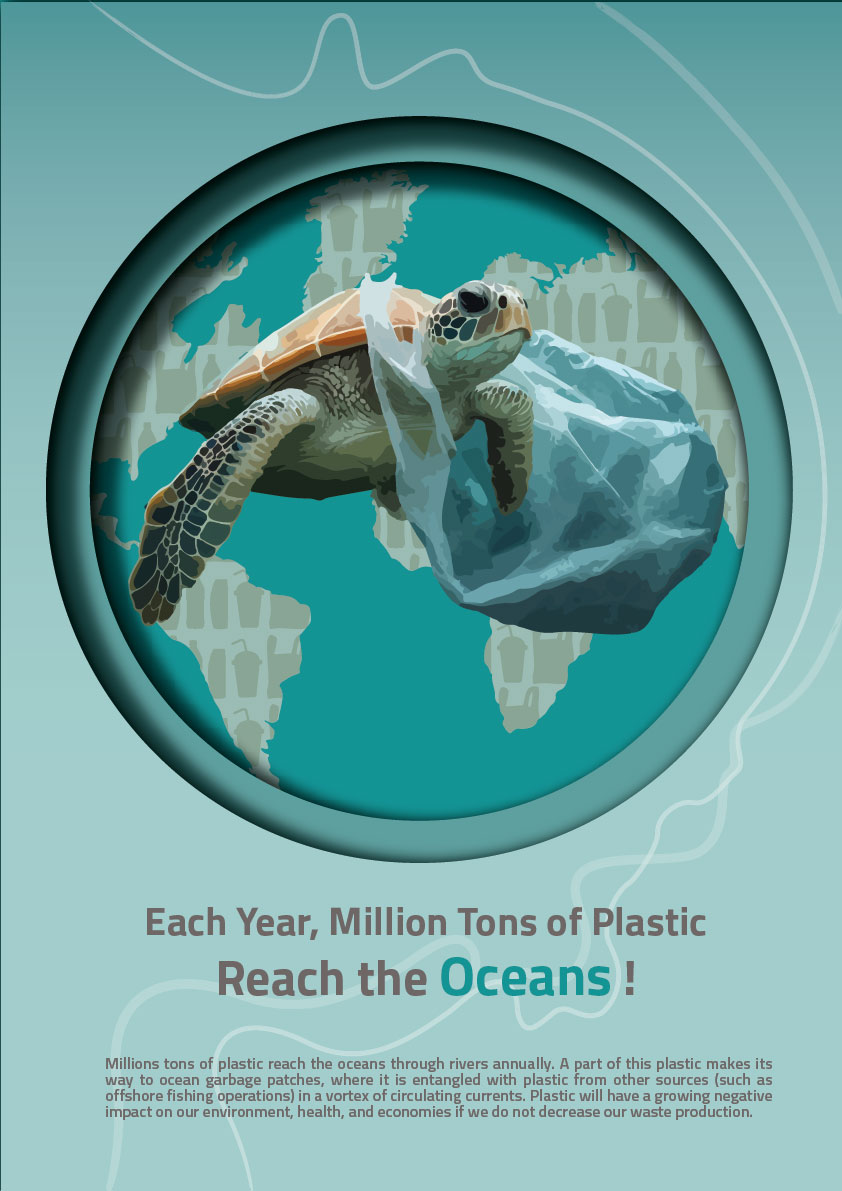
Millions tons of plastic reach the oceans through rivers annually. A part of this plastic makes its way to ocean garbage patches, where it is entangled with plastic from other sources (such as offshore fishing operations) in a vortex of circulating currents. Plastic will have a growing negative impact on our environment, health, and economies if we do not decrease our waste production.
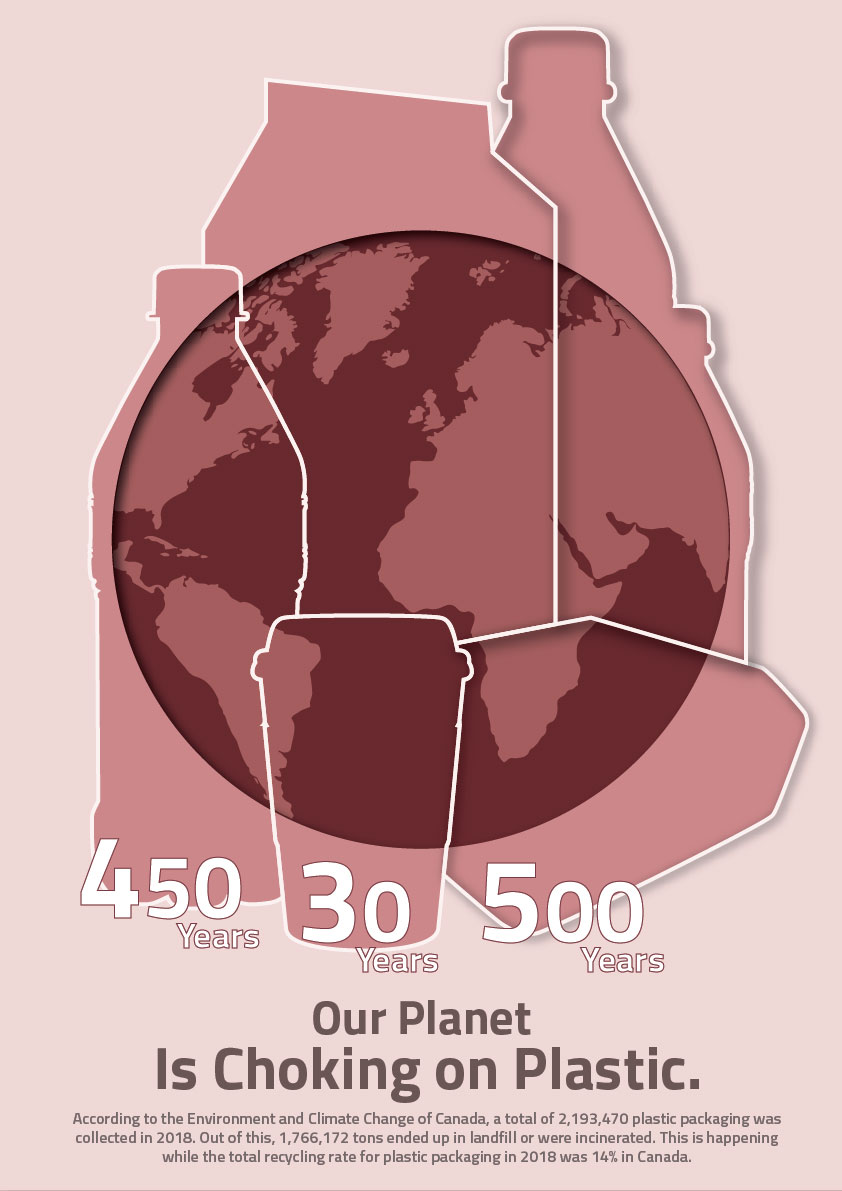
According to the Environment and Climate Change of Canada, a total of 2,193,470 plastic packaging was collected in 2018. Out of this, 1,766,172 tons ended up in landfills or were incinerated. This is happening while the total recycling rate for plastic packaging in 2018 was 14% in Canada.
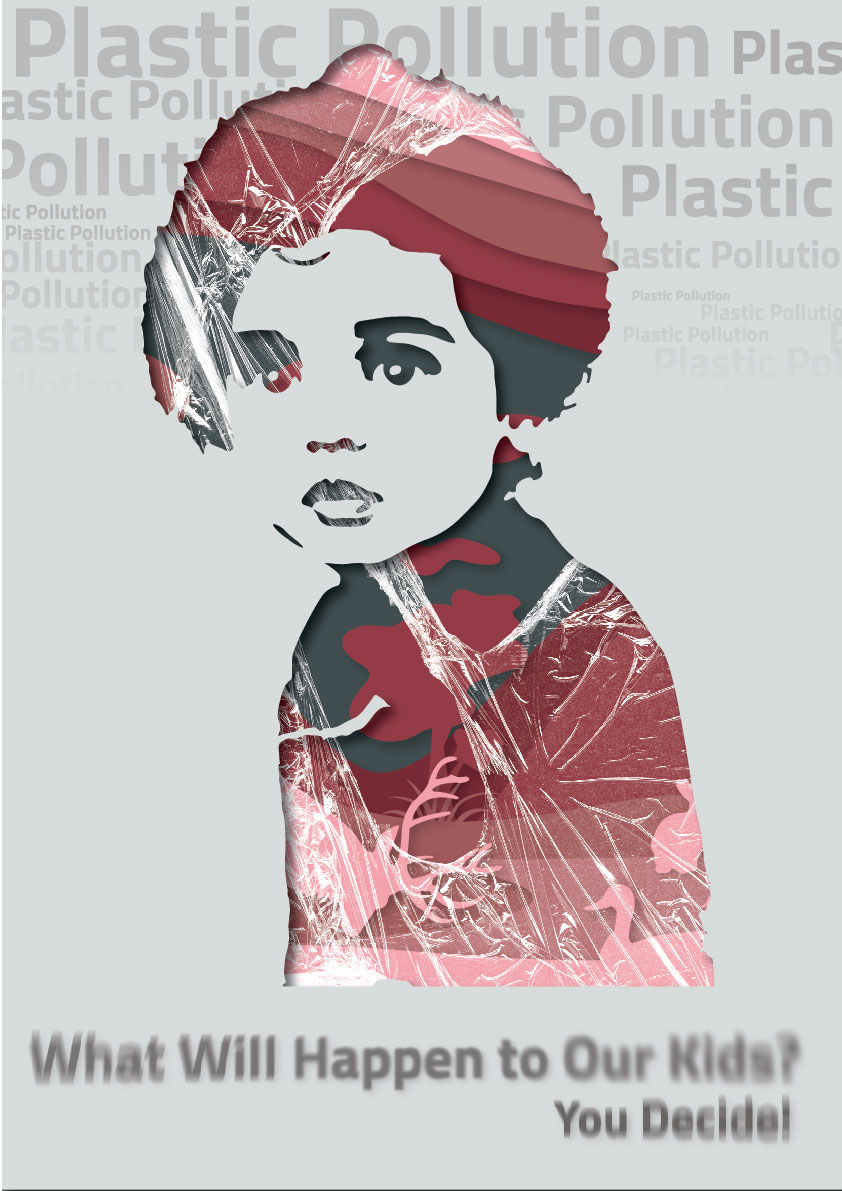
You Decide for the future!
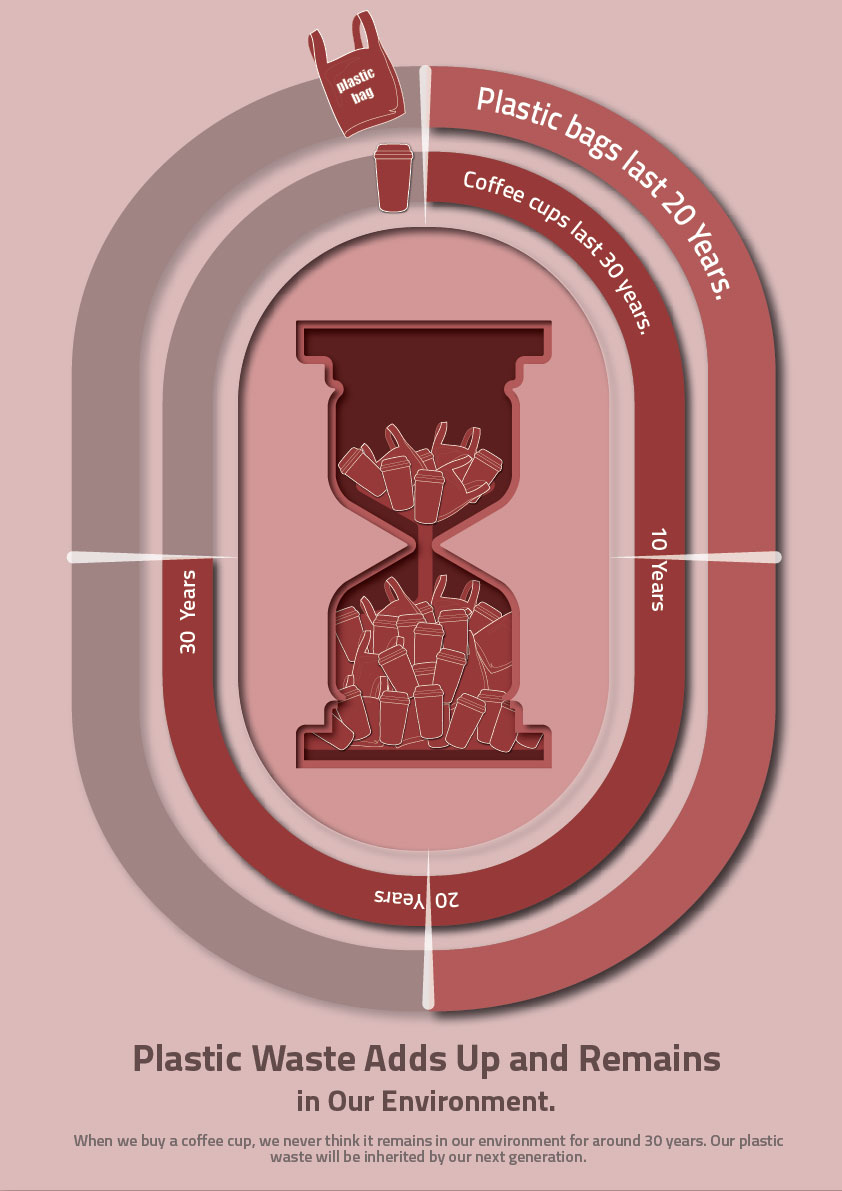
When we buy a coffee cup, we never think it will remain in our environment for around 30 years. Our plastic waste will be inherited by the next generation.
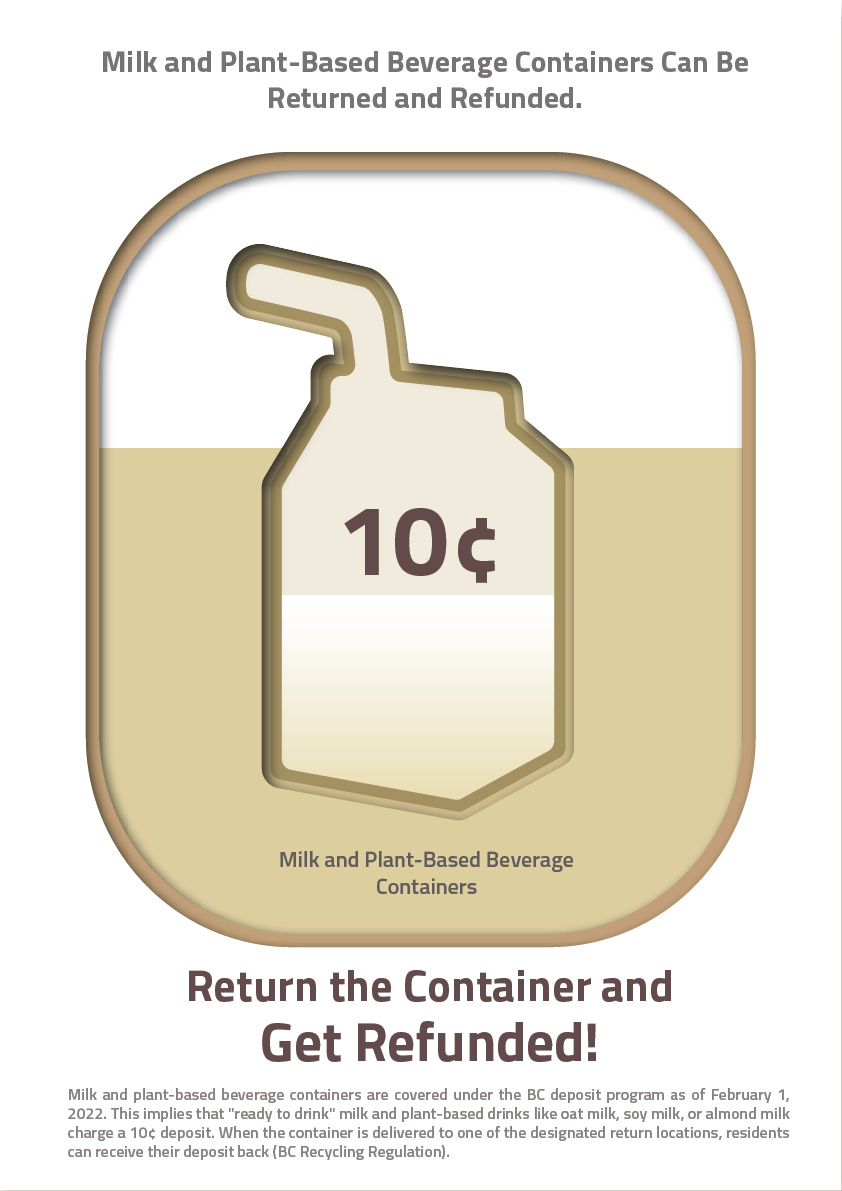
Milk and plant-based beverage containers are covered under the BC deposit program as of February 1, 2022. This implies that "ready to drink" milk and plant-based drinks like oat milk, soy milk, or almond milk charge a 10¢ deposit. When the container is delivered to one of the designated return locations, residents can receive their deposit back (BC Recycling Regulation).
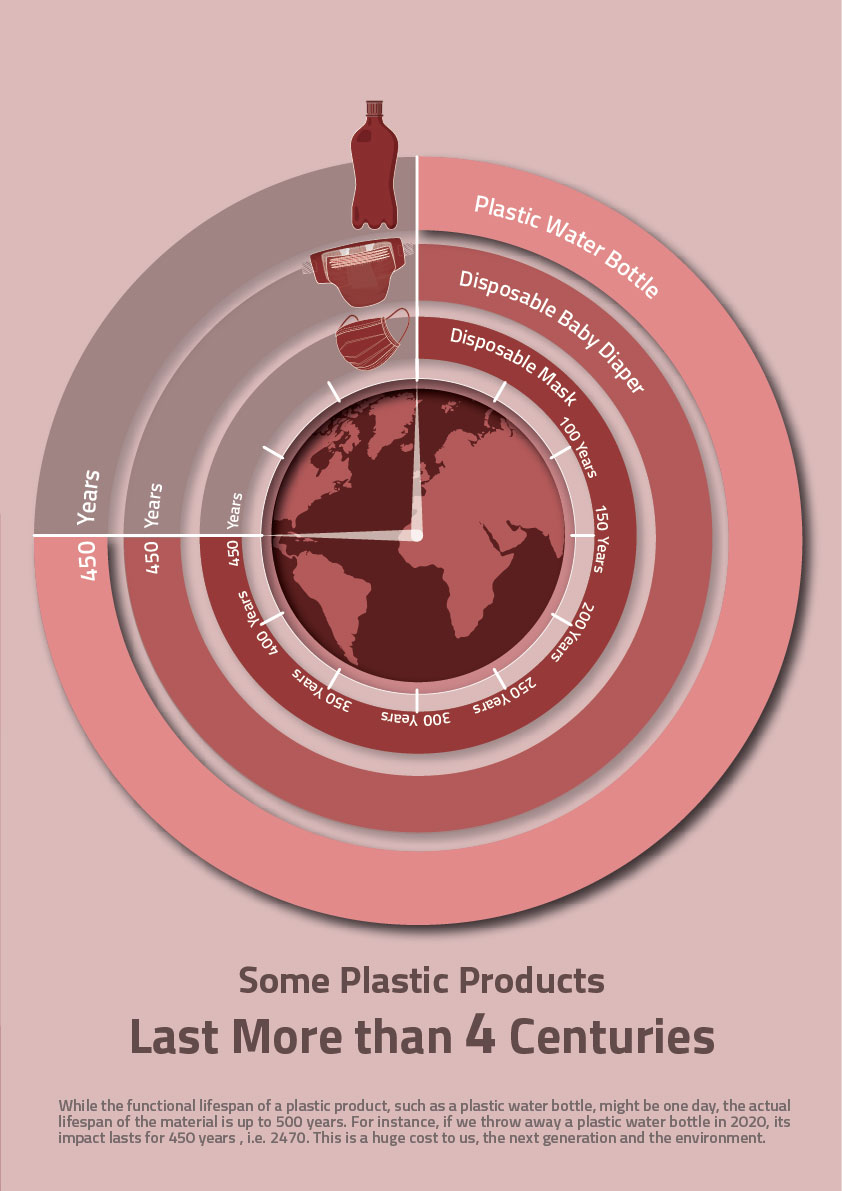
While the functional lifespan of a plastic product, such as a plastic water bottle, might be one day, the actual lifespan of the material is up to 500 years. For instance, if we throw away a plastic water bottle in 2020, its impact will last for 450 years, i.e. 2470. This is a huge cost to us, the next generation, and the environment.
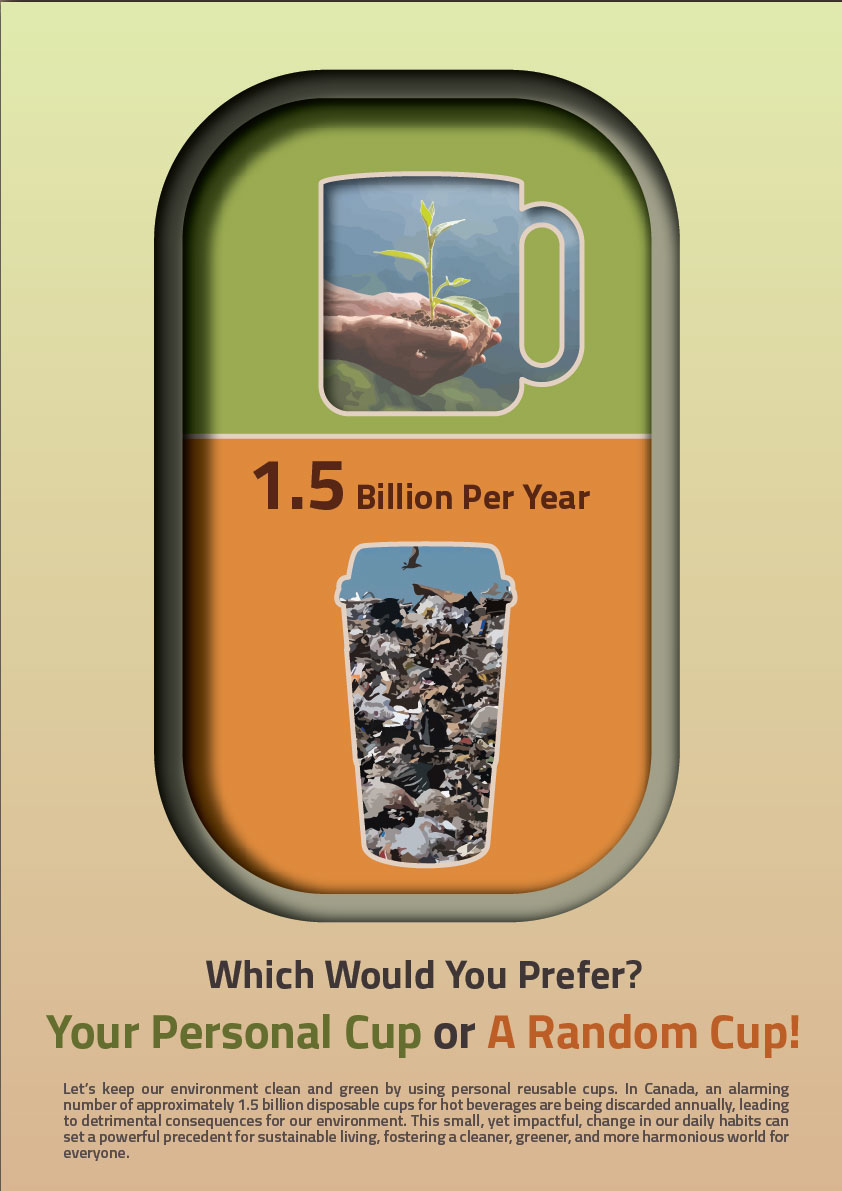
Let’s keep our environment clean and green by using personal reusable cups. In Canada, an alarming number of approximately 1.5 billion disposable cups for hot beverages are being discarded annually, leading to detrimental consequences for our environment. This small, yet impactful, change in our daily habits can set a powerful precedent for sustainable living, fostering a cleaner, greener, and more harmonious world for everyone.
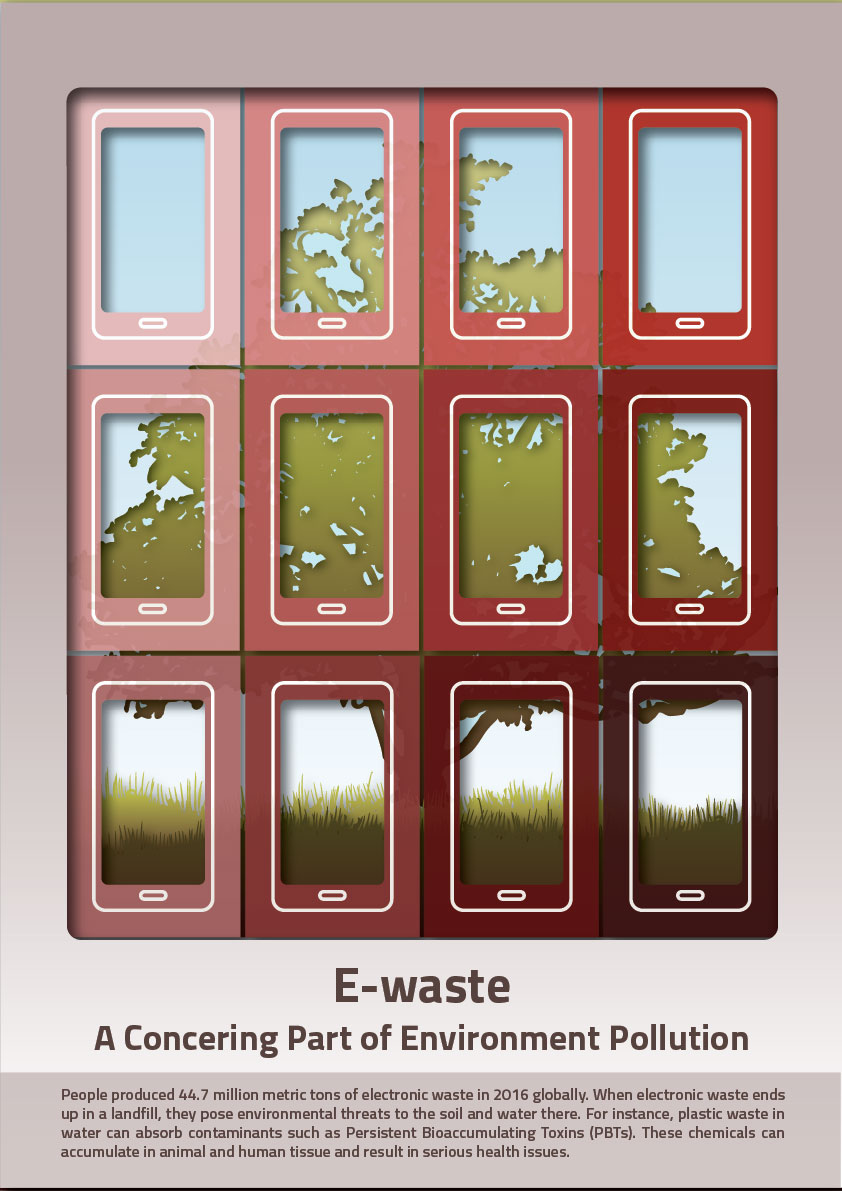
People produced 44.7 million metric tons of electronic waste in 2016 globally. When electronic waste ends up in a landfill, they pose environmental threats to the soil and water there. For instance, plastic waste in water can absorb contaminants such as Persistent Bioaccumulating Toxins (PBTs). These chemicals can accumulate in animal and human tissue and result in serious health issues.
Let's imagine the future! What will happen to our kids, if we continue our current trend of plastic waste recycle? While only a small amount (9%) of plastic waste is effectively recycled, the majority of this waste is either disposed of in landfills, incinerated, or released into the environment. The recycled rate is even less than %9 in Canada, i.e. %6.
Learn More!Contamination of Plastic waste is not limited to food residue, but mixing different types of plastic waste, such as compostable and degradable plastics with conventional plastics are one of most important barriers in recycling.
Plastic products are made from different materials (polymers). The combination of polymer types is another barrier to recycling. Also, the need for raw plastic for recycling plastic waste and the business tendency towards short-termism commercial benefits makes the recycling process more difficult.
The high costs of recycling and the low quality of recycled materials are other barriers to recycling.
Manual waste separation is a barrier to professional recycling. Some products may be too small to be sorted and some materials have no separate stream due to their lack of volume. In addition, mixing different materials and colors significantly reduces the rate of plastic recycling.
Recycling is feasible only if material flows are homogeneous. As a result, automatic separation can optimize waste separation and sorting for the next phases of recycling.
Follow the guide provided at the site of recycling bins to see what can be recycled and where.
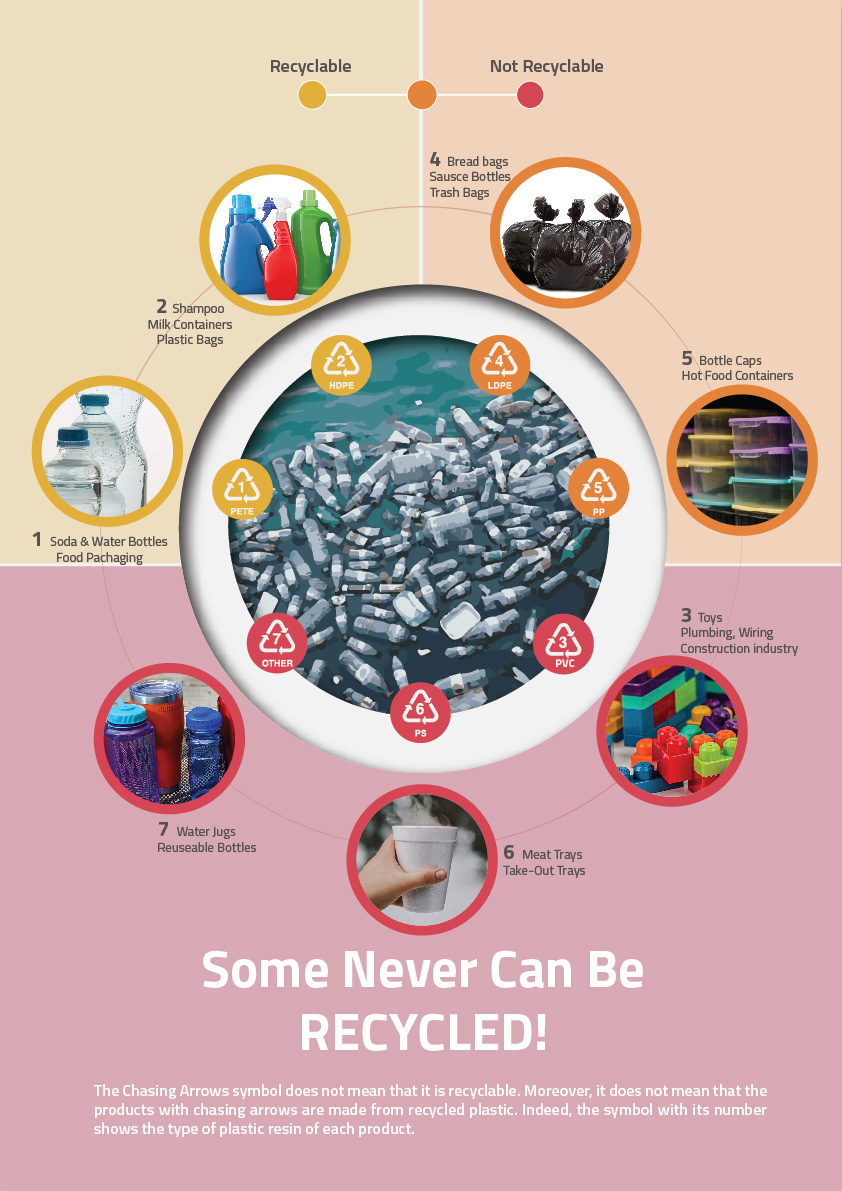
The Chasing Arrows symbol does not mean that it is recyclable. Moreover, it does not mean the products with chasing arrows has been made from recycled plastic. Indeed, the symbol with its number shows the type of plastic resin of each product.
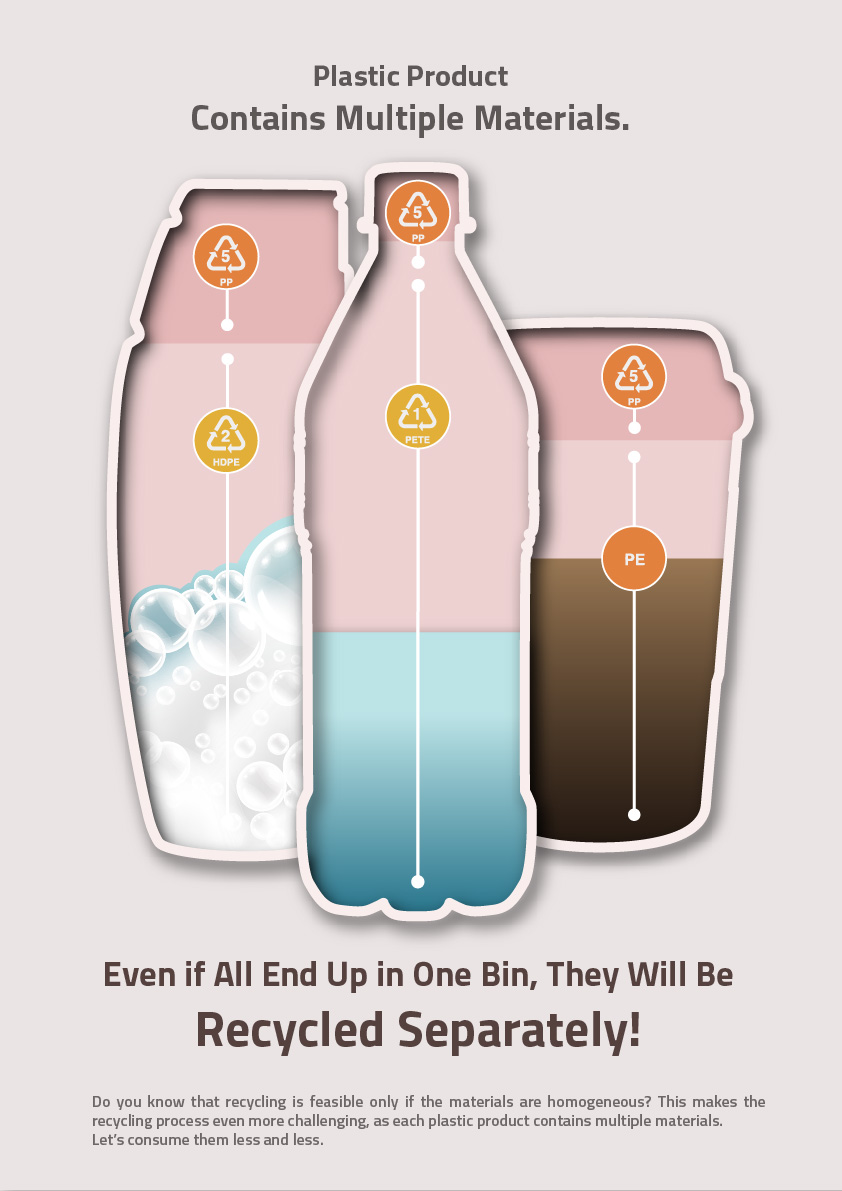
Do you know that recycling is feasible only if the materials are homogeneous? This makes the recycling process even more challenging, as each plastic product contains multiple materials. Let’s consume them less and less.
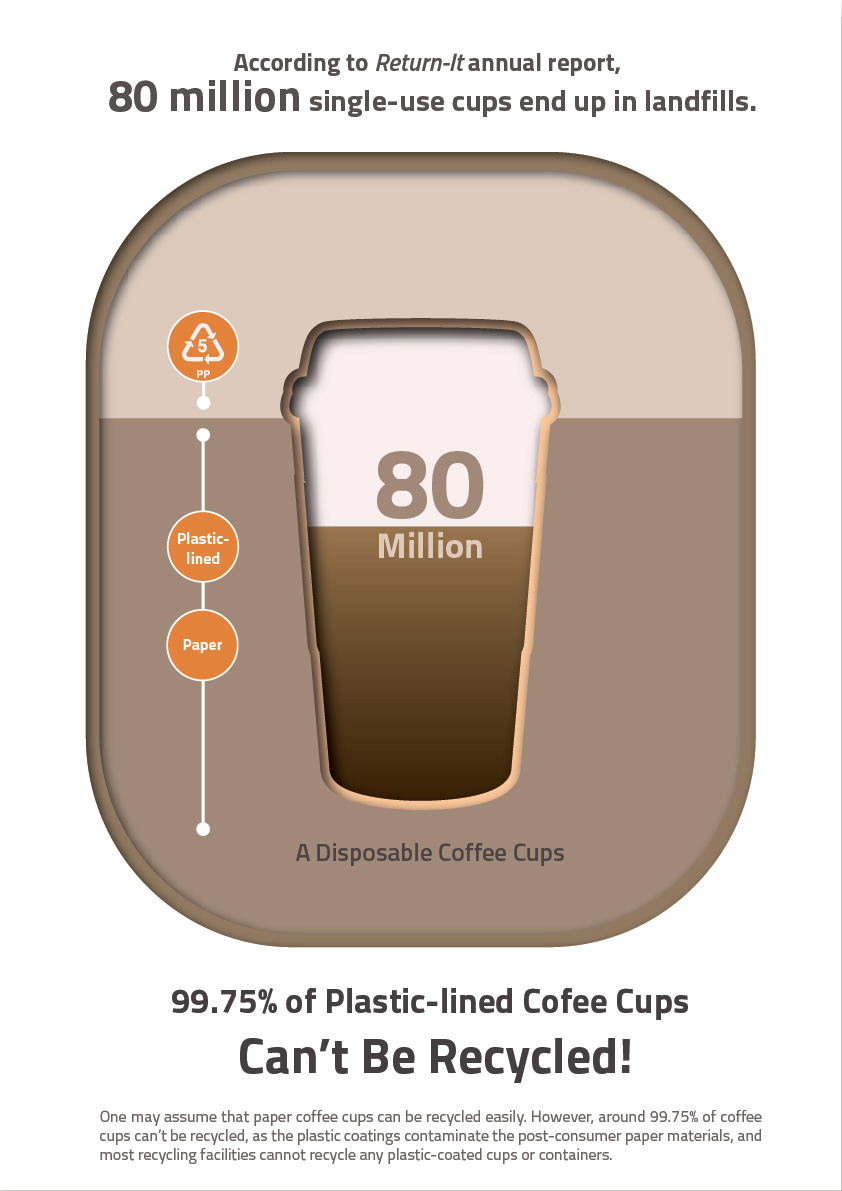
One may assume that paper coffee cups can be recycled easily. However, around 99.75% of coffee cups can’t be recycled, as the plastic coatings contaminate the post-consumer paper materials, and most recycling facilities cannot recycle any plastic-coated cups or containers.
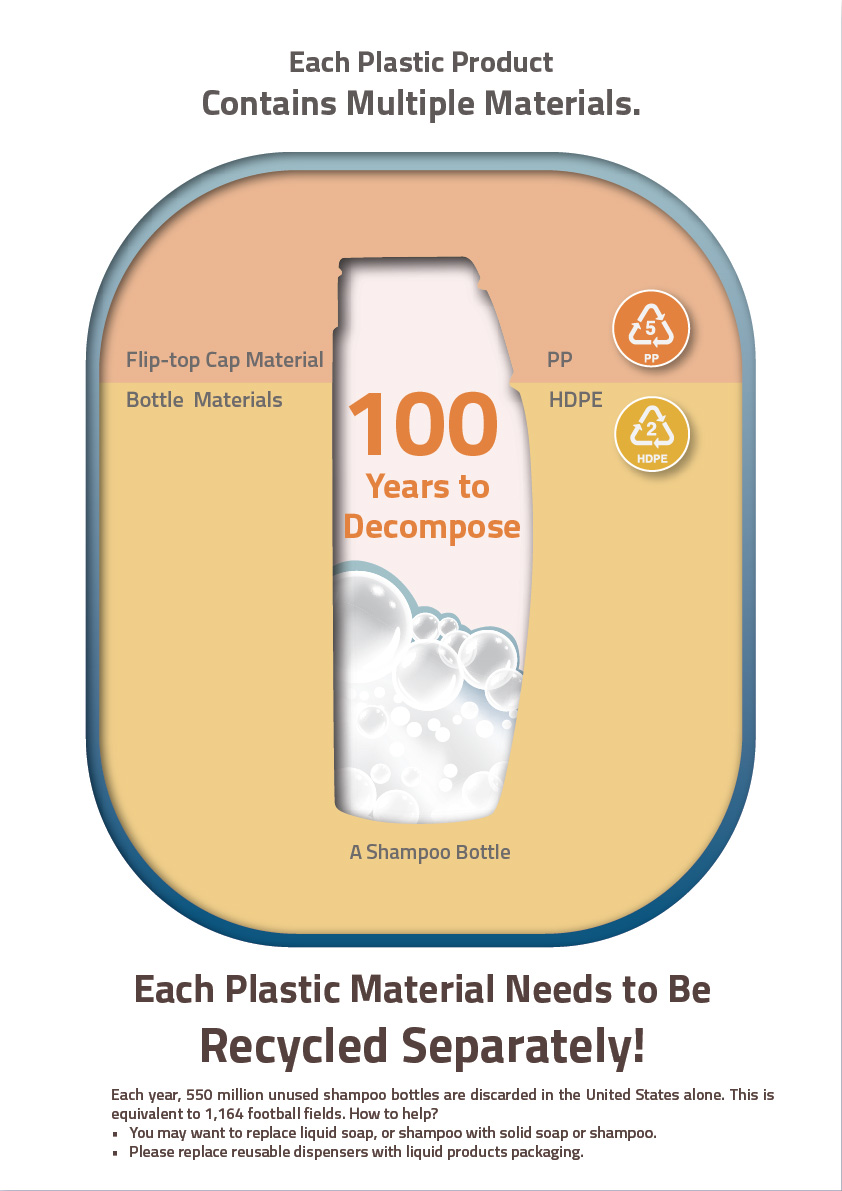
Each year, 550 million unused shampoo bottles are discarded in the United States alone. This is equivalent to 1,164 football fields. How to help? You may want to replace liquid soap, or shampoo with solid soap or shampoo. Please replace reusable dispensers with liquid products packaging.
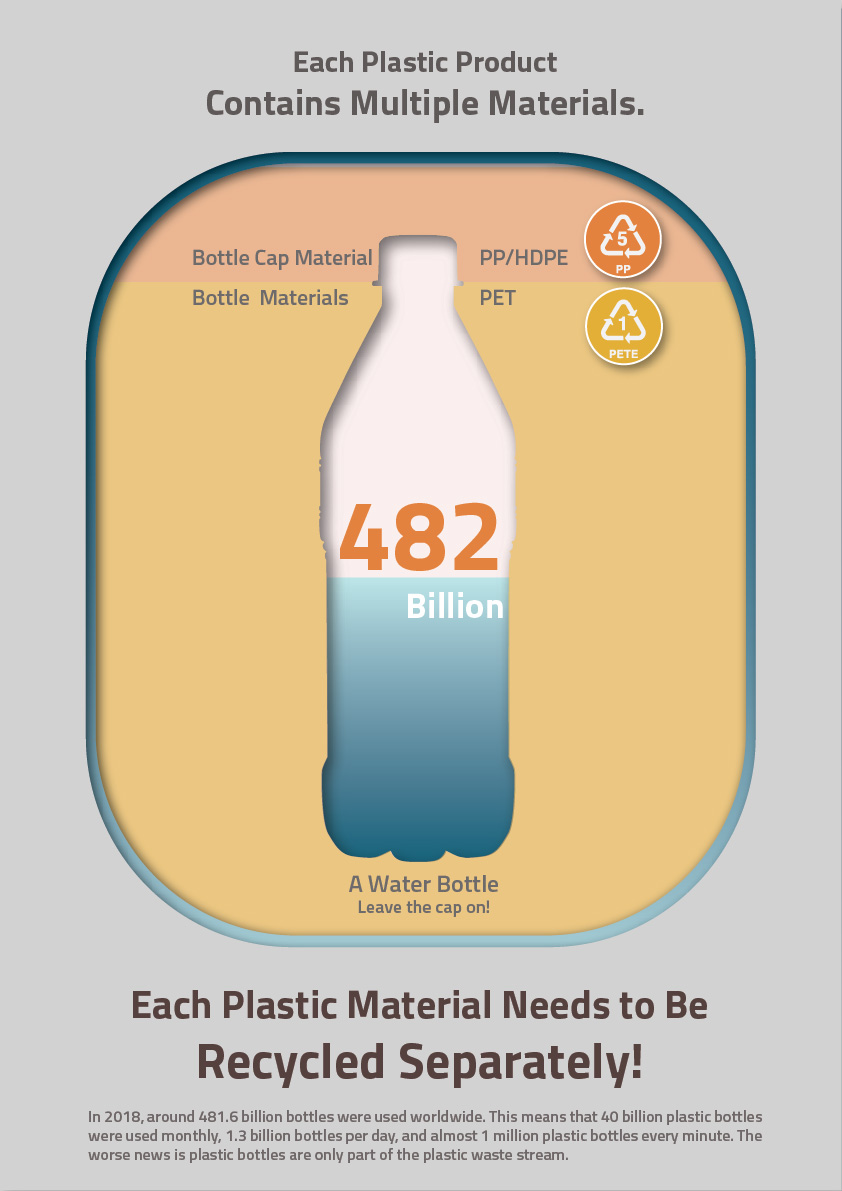
In 2018, around 481.6 billion bottles were used worldwide. This means that 40 billion plastic bottles were used monthly, 1.3 billion bottles per day, and almost 1 million plastic bottles every minute. The worst news is plastic bottles are only part of the plastic waste stream.

Recycling contamination is one of the most significant barriers to the recycling industry. Contamination occurs when food residues remain on recyclable products such as food and beverage containers. Moreover, the waste stream can be contaminated when people dispose of non-recyclables in the recyclables bin or throw recyclables in the non-recyclables bins.
created with
Website Builder Software .